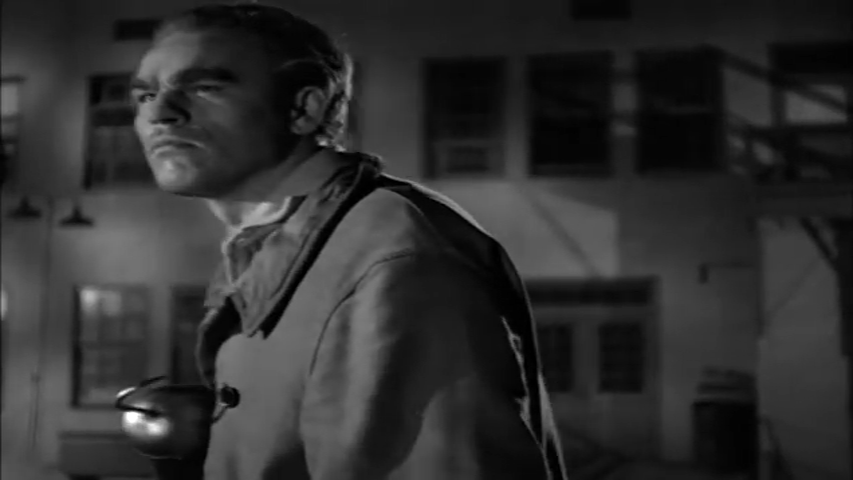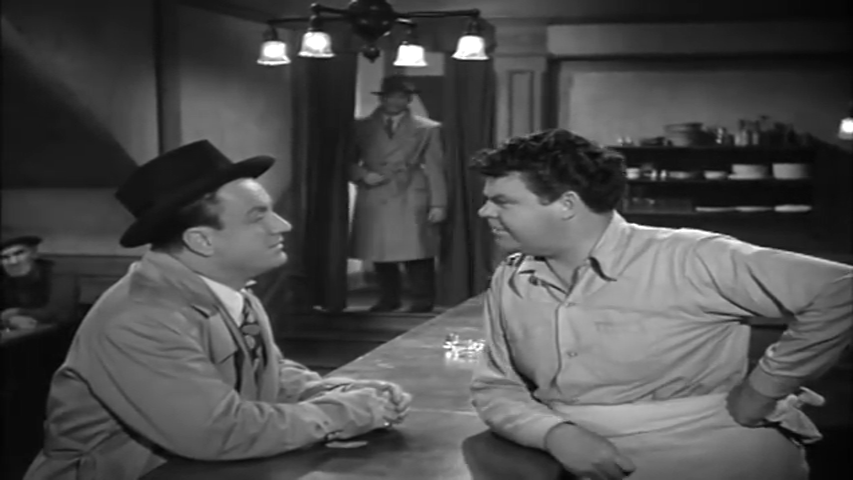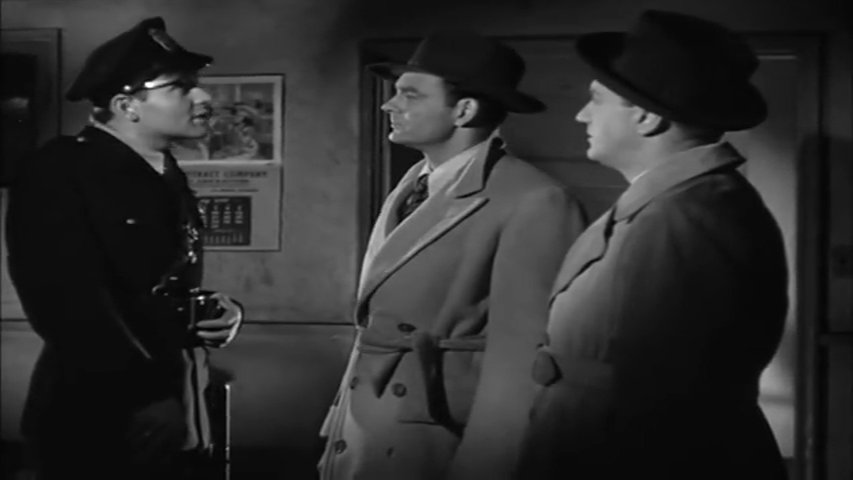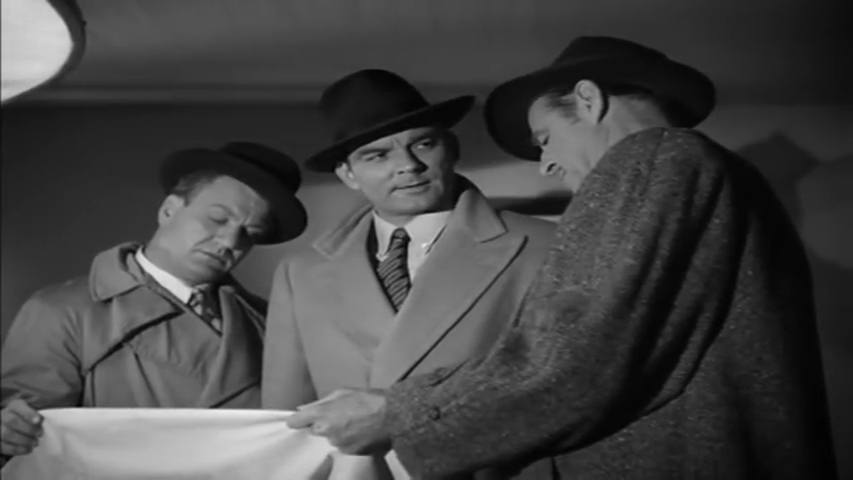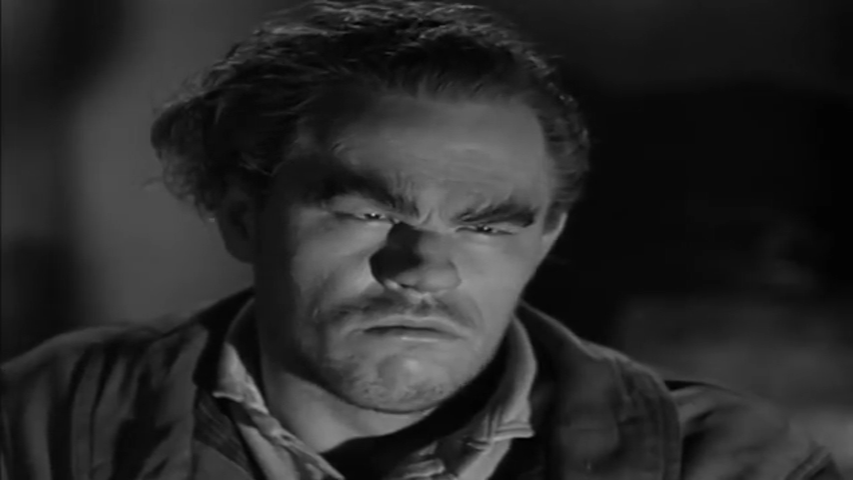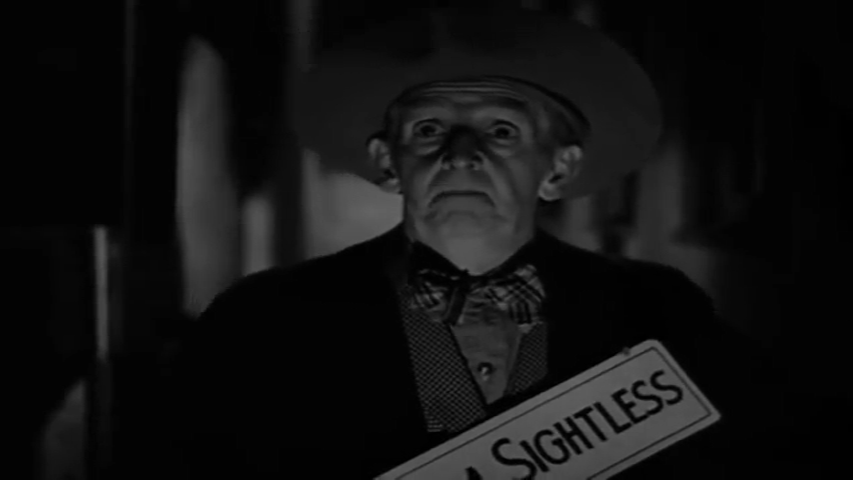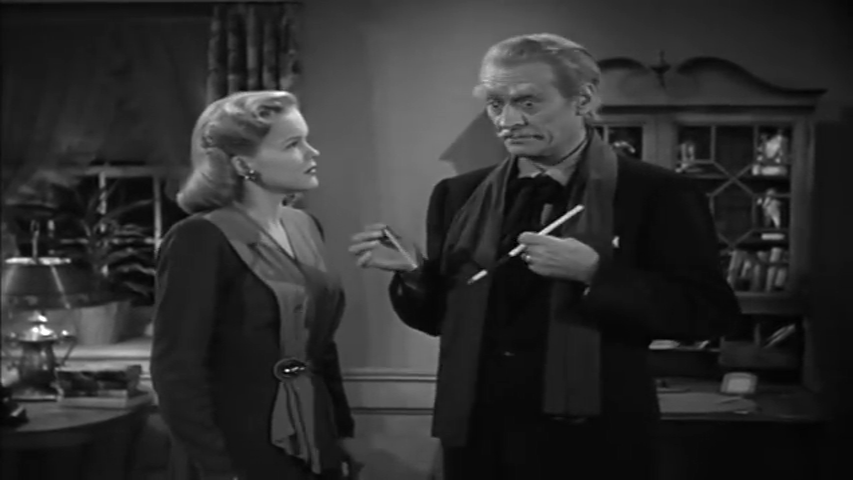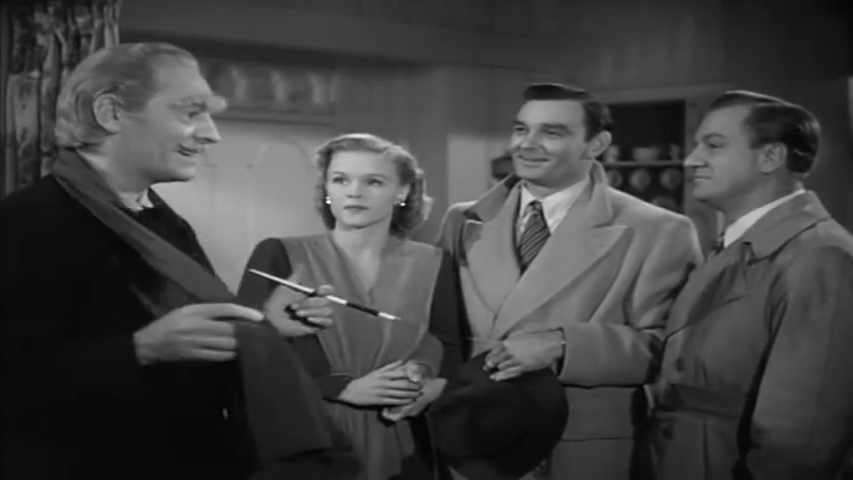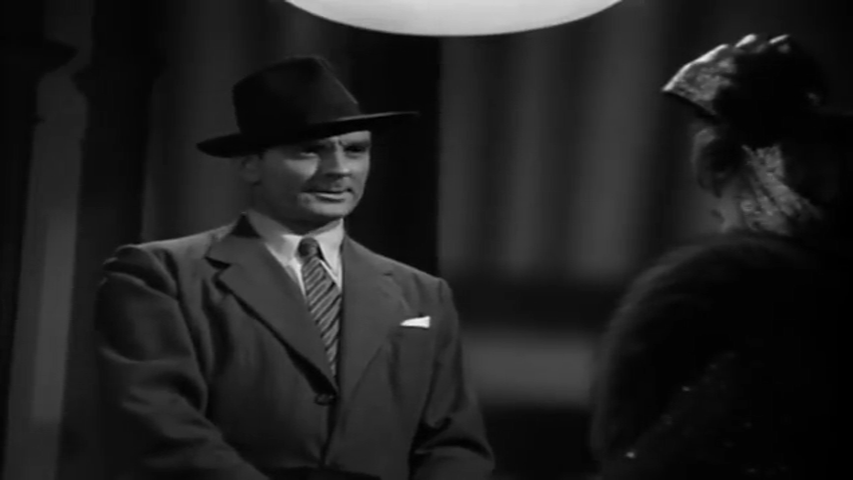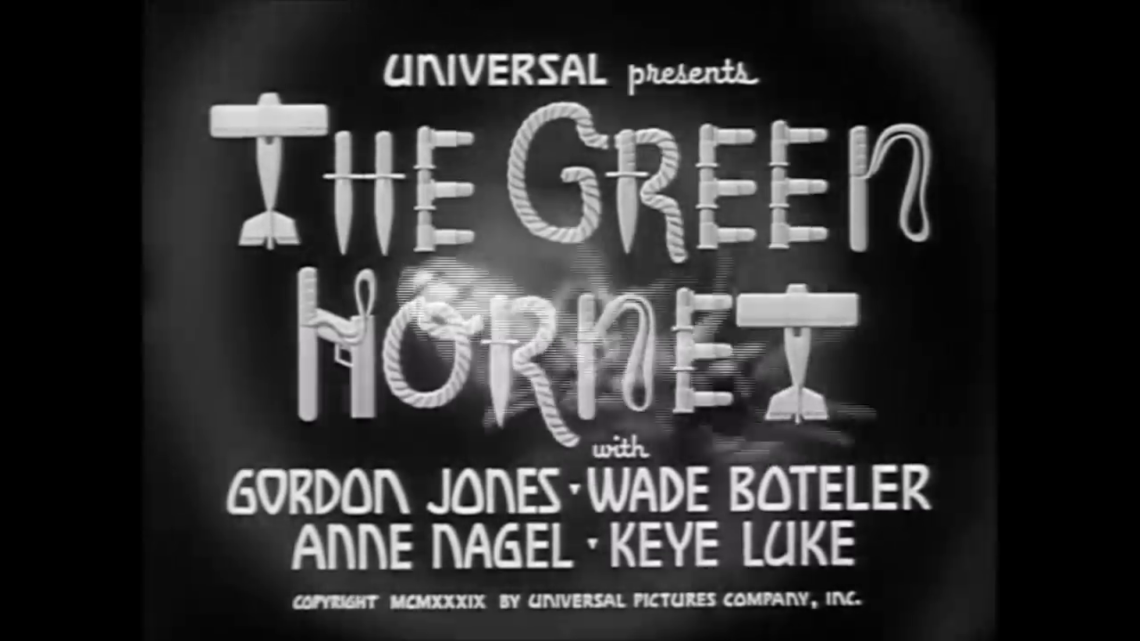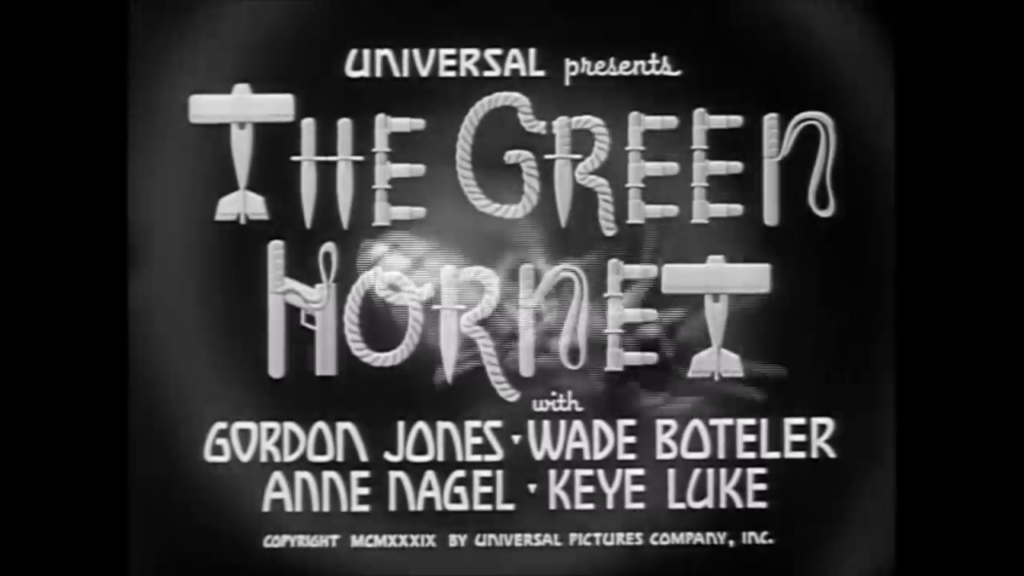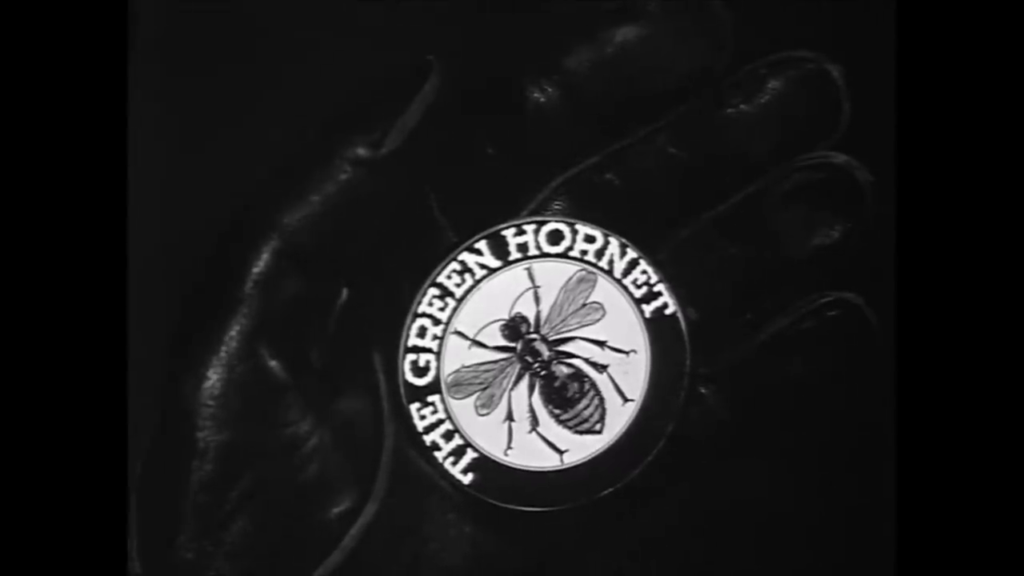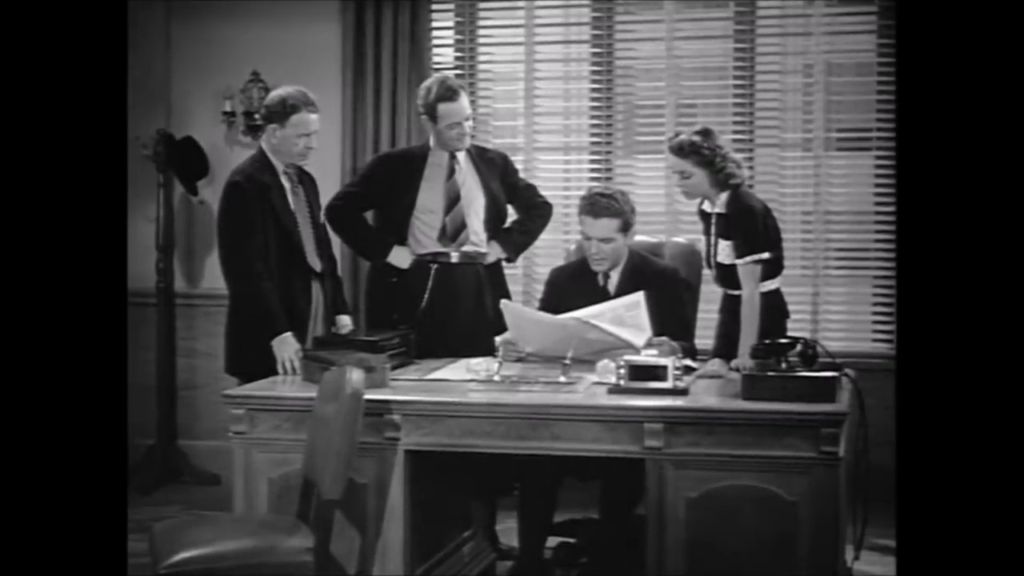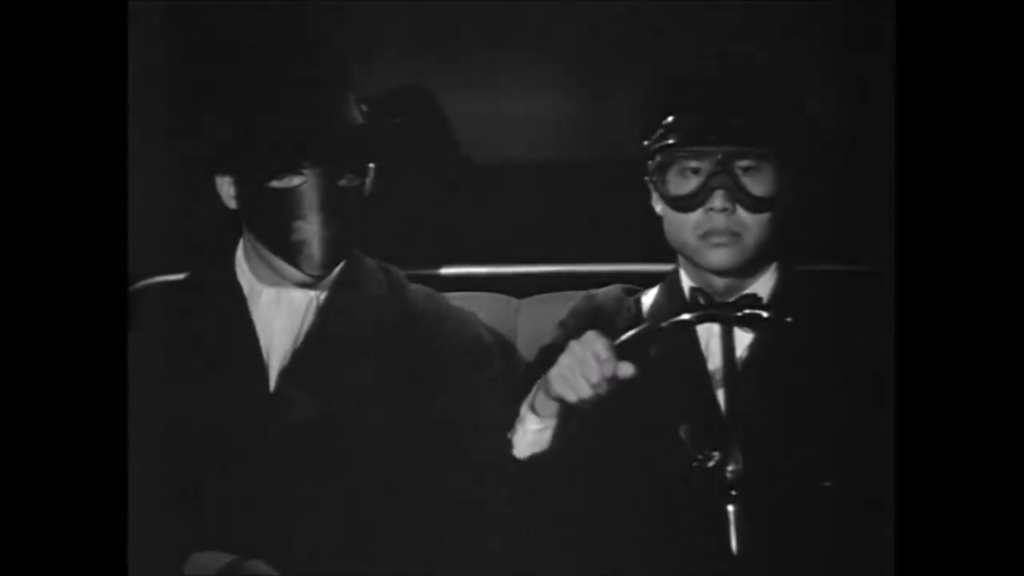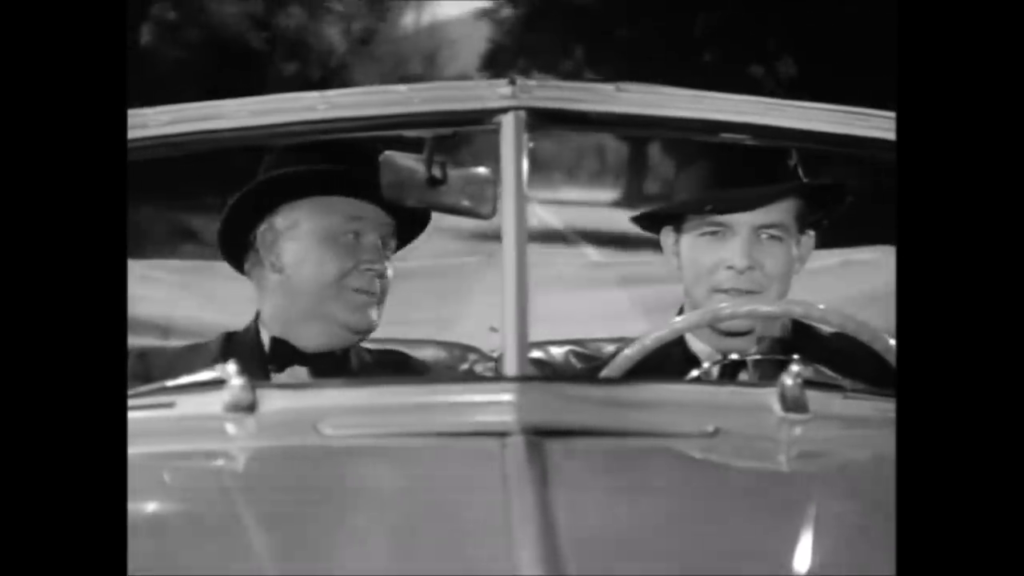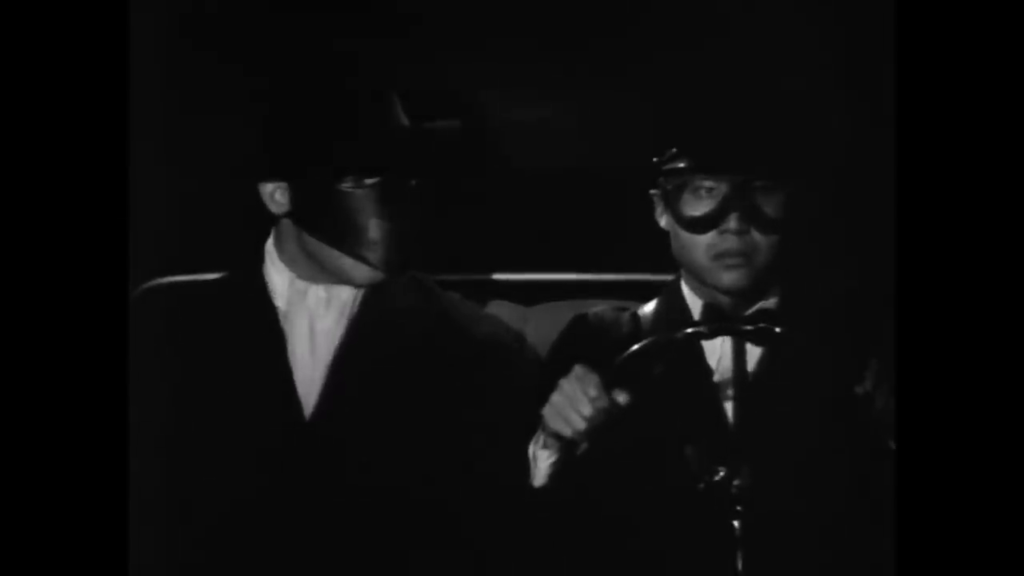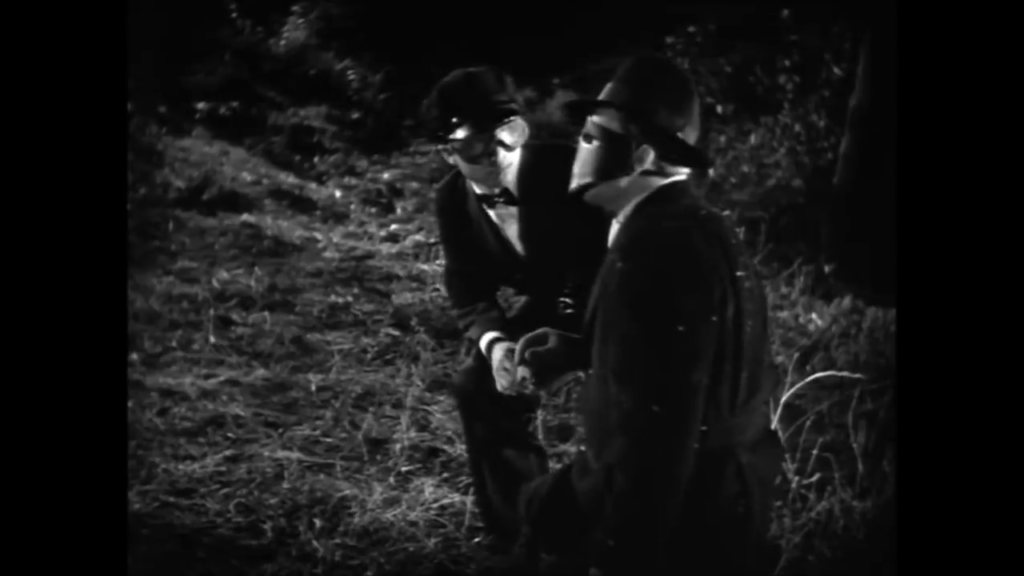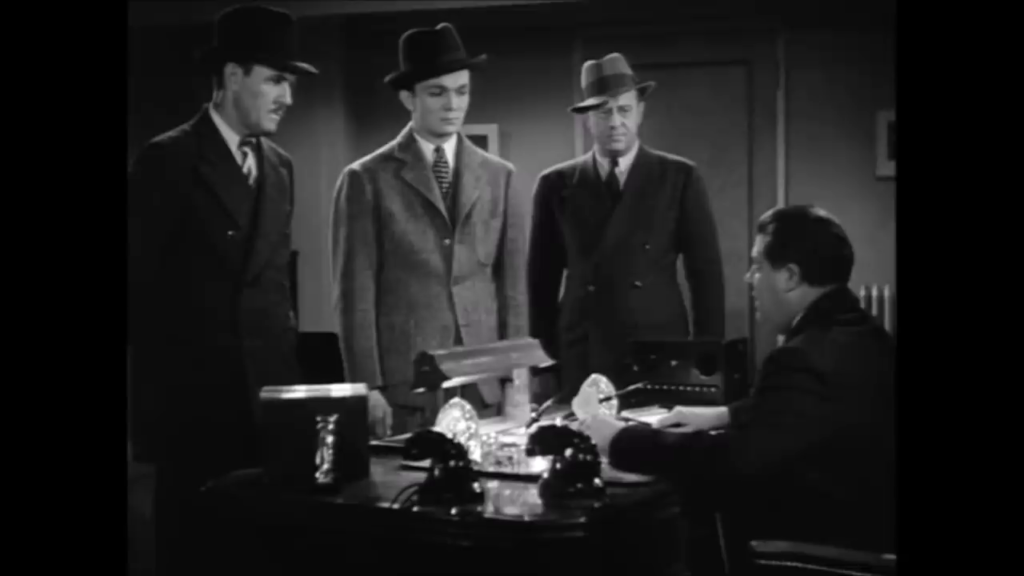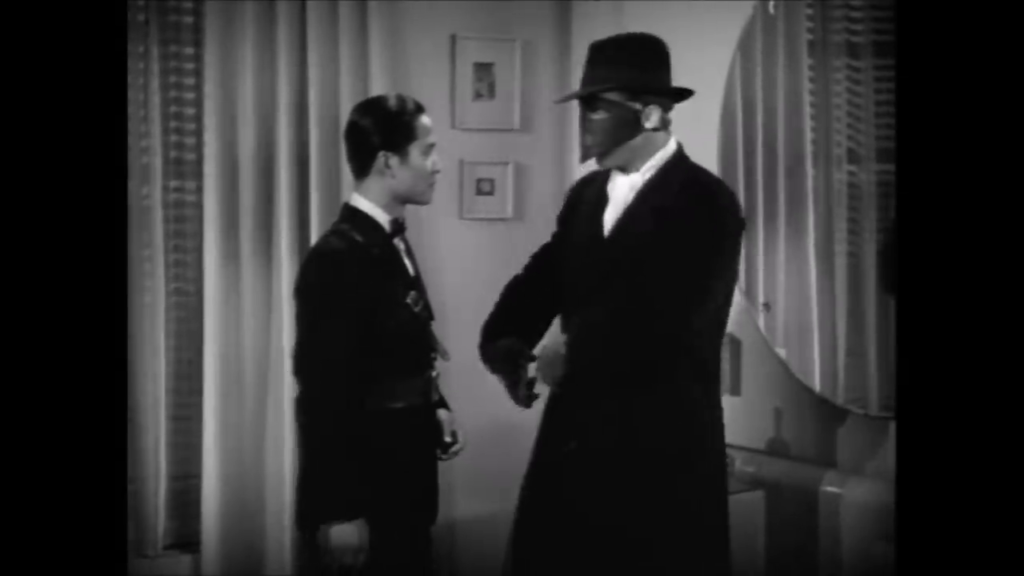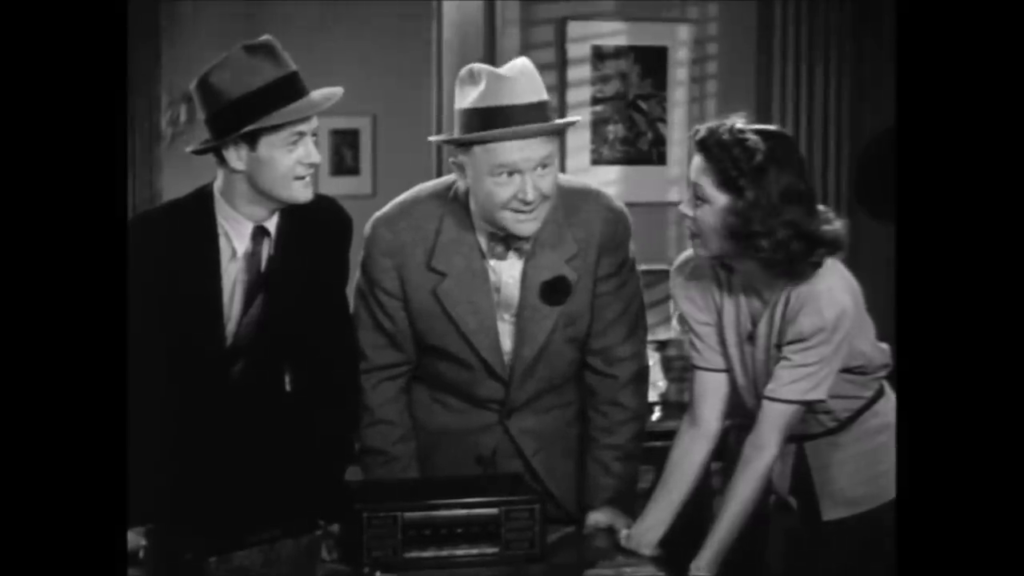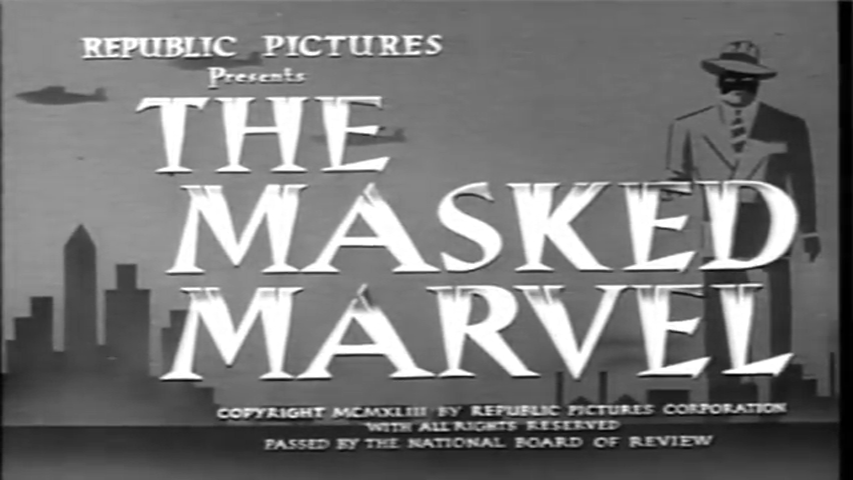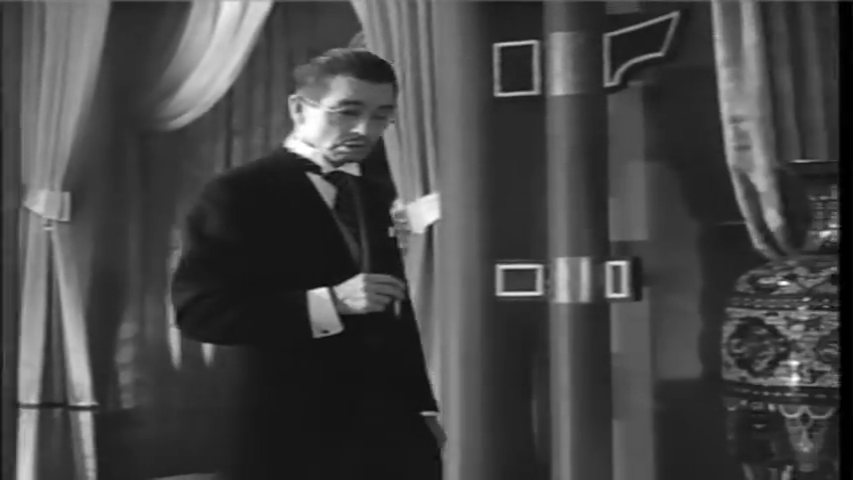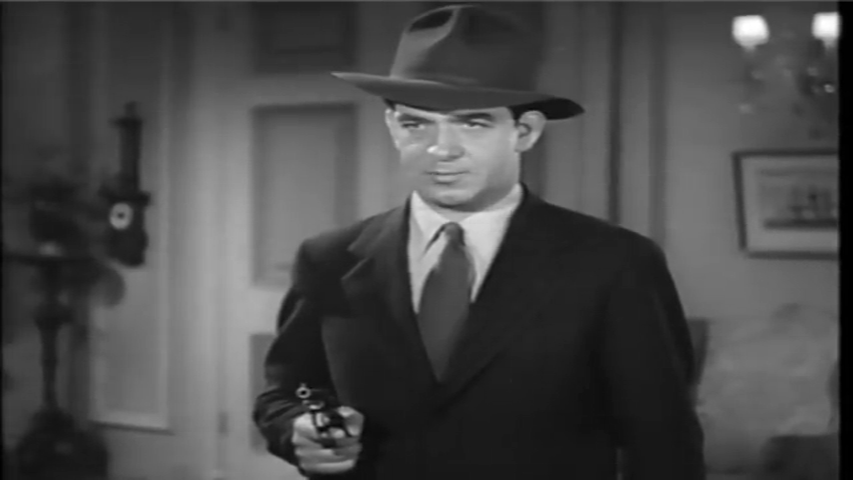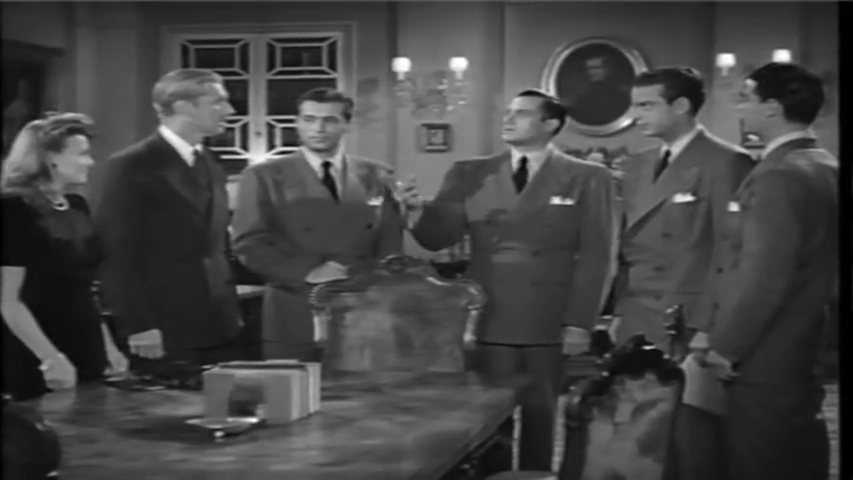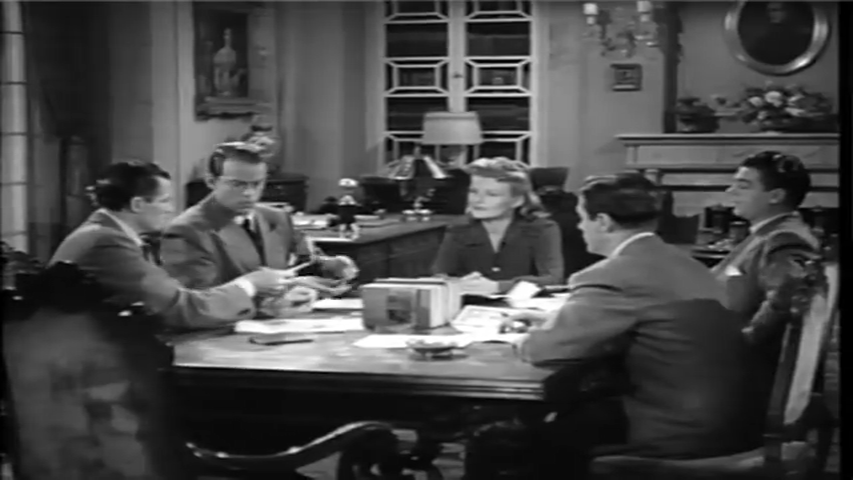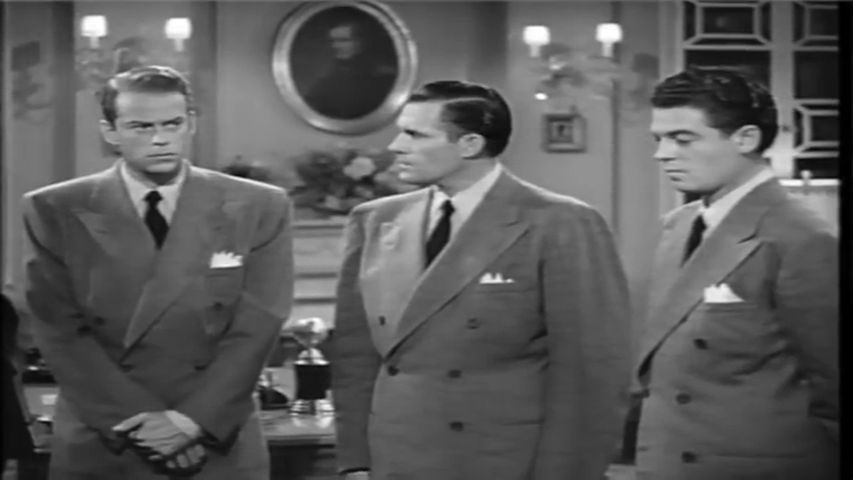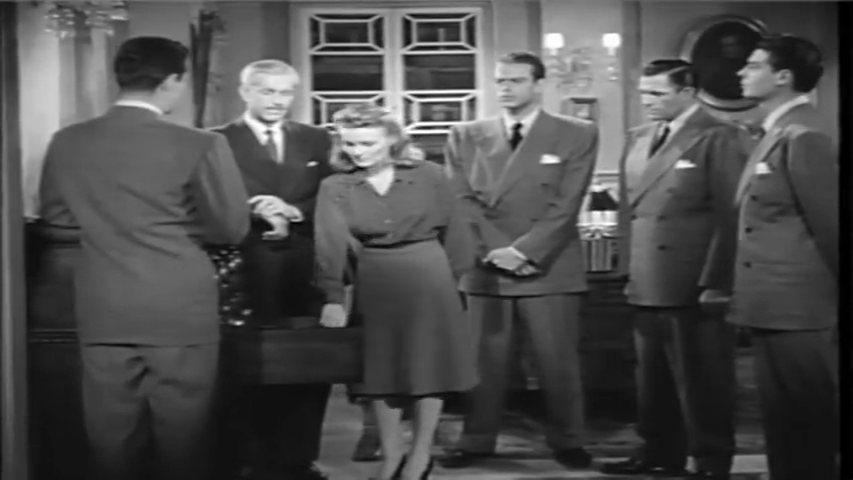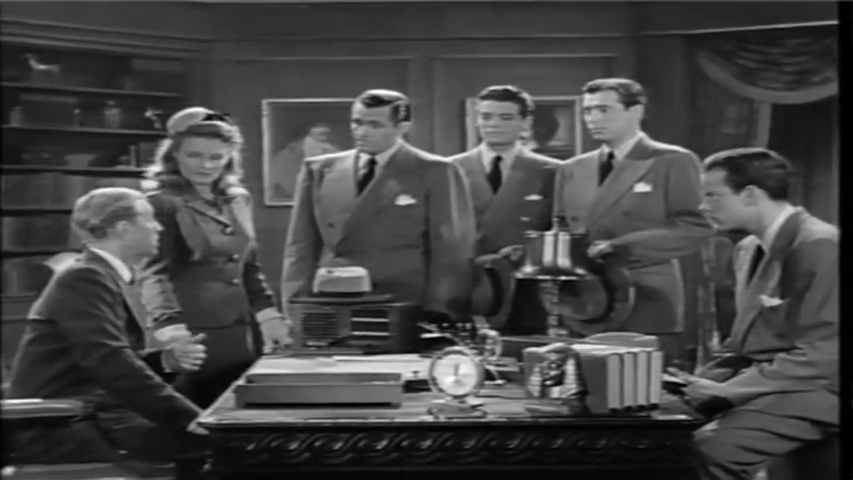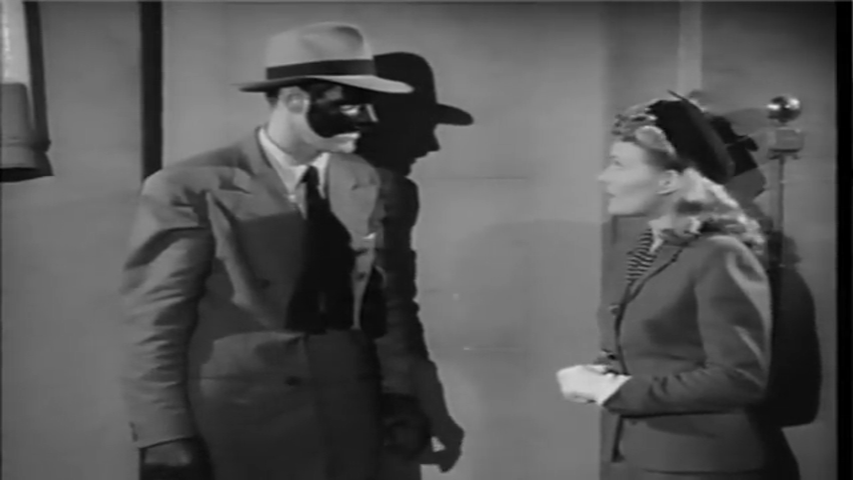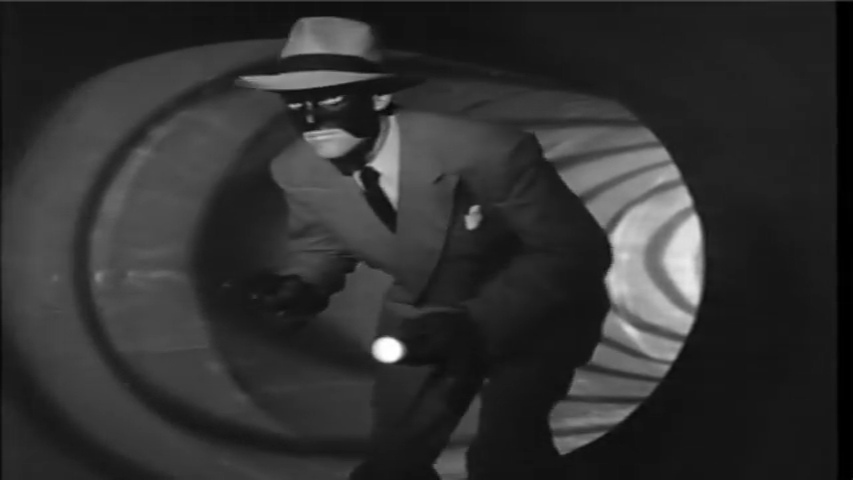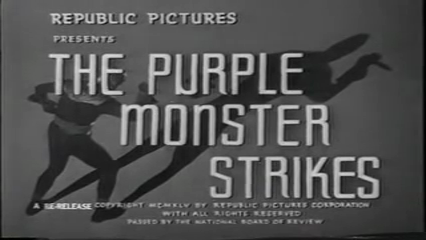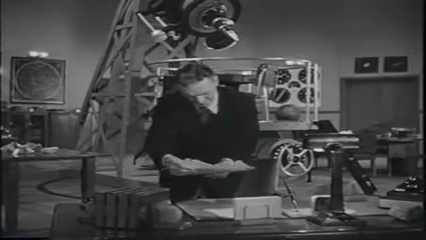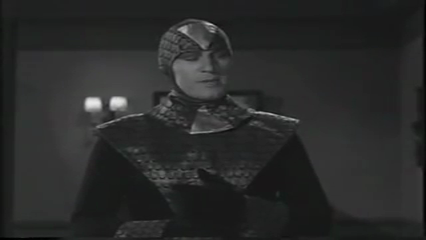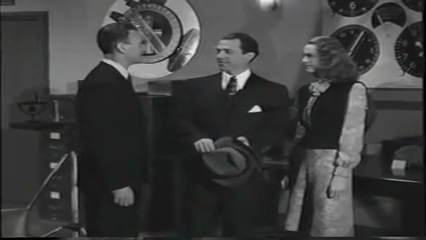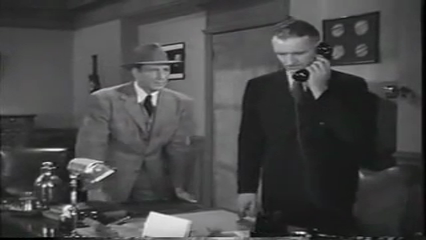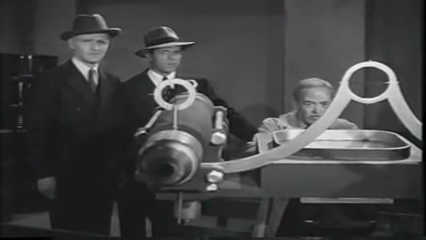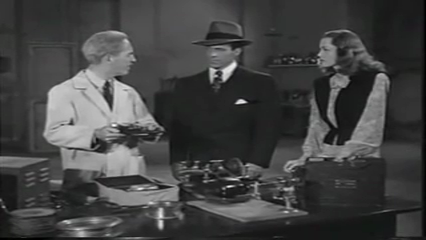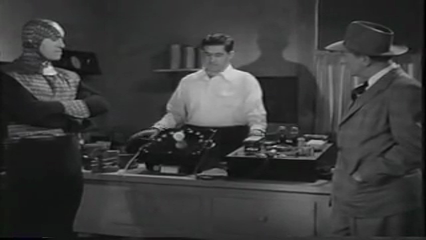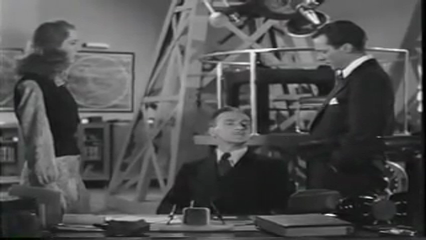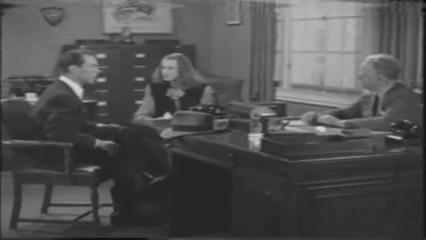-
#395 – Dick Tracy’s Dilemma (1947)
Dick Tracy’s Dilemma (1947)
Film review #395
Director: John Rawlins
SYNOPSIS: A robbery at a vault full of furs also leaves one person dead and a suspicious insurance claim. Homicide detective Dick Tracy and his partner Pat Patton are put on the case where they investigate the involvement of a man known only as “the Claw”…
THOUGHTS/ANALYSIS: Dick Tracy’s Dilemma is a 1947 film and the third Dick Tracy feature film. The film opens up with a robbery being committed on a safe at a storage facility. The watchman attempts to intervene, but later when it is found that he is missing, homicide detective Dick Tracy and his partner Pat Patton are put on the case and find the safe, which was supposed to be full of imported furs, empty. Tracy investigates the involvement of the vault’s insurance company, as well as the involvement of a man known only as “The Claw”. The story is very similar to the other two films of the series, with a murder investigation being the primary thread running through the film, with lots of little investigations and twists tying into it. The runtime of sixty minutes is again similar to its predecessors, which keeps everything streamlined and without unnecessary filler. It is well paced with a variety of locations and colourful characters to keep things interesting.
The most notable element of this film compared to the others is the return of Ralph Byrd to the role of Dick Tracy in place of Morgan Conway from the first two. Byrd starred as Tracy in the four movie serials released between 1941 and 1947, and his return is very much welcome. While Conway probably looked more like the Dick Tracy from the comics, Byrd has a much more likeable charm and personality, and just seems to fit in better with the other cast members. The rest of the cast also has plenty of personality, and embody the type of comic book characters of the original format, with the ridiculously cartoony names and all. Tess Trueheart as Tracy’s girlfriend returns, and is a better fit with Byrd’s Tracy, as she always looked far too young to be Conway Tracy’s girlfriend. The English theatre actor Vitamin (see what I mean about cartoony names?) as some comic relief and eccentricity, along with the accident prone Pat Patton. The Claw himself is also fairly menacing, but is very similar to the other villains in the earlier films. The film balances the gritty crime-noir aesthetics with high contrast lighting and dramatic angles with these comic-esque characters that would appeal to a younger audience. Again, the film balances these two genres very well without undermining one another.
There is not much else to say about this film that I didn’t mention in my reviews of the earlier ones. Dick Tracy’s Dilemma, following its predecessors, has hit a sweet spot balancing crime-noir with a comic book style that can appeal to a wide range of viewers (which is what you want in a feature film). It doesn’t change much from the previous films, and sticks very much to the sixty minute runtime, but again it doesn’t need to really innovate if it already has a successful formula. The return of Ralph Byrd to the role of Dick Tracy is certainly the only tweak the formula needed to make. Another solid entry in the series, even if it lacks anything innovative.
-
#394 – The Green Hornet (1940)
The Green Hornet (1940)
Film review #394
Director: Ford Beebe, Ray Taylor
SYNOPSIS: A racketeering gang is causing all sorts of crimes across the city. Meanwhile, the owner of The Sentinel newspaper Britt Reid, upon learning of these criminal activities, has decided to fight back in disguise as The Green Hornet, accompanied by his valet Kato and their super fast car, they attempt to shut down the criminal rackets all the while trying to avoid having their identities uncovered by their friends at The Sentinel…
THOUGHTS/ANALYSIS: The Green Hornet is a 1940 movie serial based on the radio series of the same name. The story opens up showing a crime racket running amok in a city, with The Sentinel newspaper trying to chase down the stories behind their criminal activities. Britt Reid, the head of the newspaper, decides it is time for someone to deal with these criminals, and he dons the disguise of “The Green Hornet,” a masked vigilante who visits these criminals and tries to uncover who is leading the rackets. The plot unfolds over the thirteen serial chapters, with each chapter introducing a new racket that The Green Hornet must confront. With each chapter introducing something new, there’s enough variety to keep viewers returning and engaged with the story. There’s the usual high-speed chases and fist fights you would expect, and these are executed pretty well. Maybe nothing too memorable, but still entertaining enough to watch.
The character of Britt Reid and his alter-ego as the Green Hornet play a typical superhero role, with no-one knowing he is leading this double life. As such, this leads to many of his friends and colleagues at The Sentinel newspaper wondering whether The Green Hornet is a hero or villain, and in some cases working to apprehend him, which leads to some complications and interesting turns in the story. The only person who knows his identity is Britt’s valet Kato, who drives The Green Hornet’s car, which is a super speedy vehicle that makes a buzzing sound akin to a hornet. Kato stands out as a character as he is actually portrayed by an Asian actor, whereas a lot of the time Asian characters were portrayed by white actors in makeup to “look” Asian. Also of note is that when the serial was released in 1940, the U.S. had not entered world war two, although anti-Japanese sentiment was still growing, leading to Kato’s original origin being Japanese being changed to Korean for the serial (Keke Luke, the actor himself, was Chinese-American). Nevertheless, it is very rare to see a non-white person in a leading role at this time. Other characters include the one token female character, who works at The Sentinel and believes throughout that The Green Hornet is a force for good in spite of her colleagues believing otherwise. Also Britt’s bodyguard plays a bit of a comic relief character, and his being Irish leads to some stereotypical phrases that come out of his mouth. The villains don’t really have much of an impact as characters themselves, as they mostly change with each chapter and the new racket that the Green Hornet must thwart, but that’s not too much of a problem, as the protagonists are much more interesting.
Overall, The Green Hornet is a good example of the serial format. There’s plenty of action, the characters are interesting, and there’s enough variety to keep viewers entertained. It is also a good example of an early superhero-esque character who leads a double life and must balance the two roles.
-
#393 – The Masked Marvel (1943)
The Masked Marvel (1943)
Film review #393
Director: Spencer Gordon Bennet
SYNOPSIS: Warren Hamilton and Martin Crane hire The Masked Marvel to stop Mura Sakima, the head of a criminal organisation who is sabotaging projects for the war effort. When Hamilton is murdered by one of Sakima’s henchman, The Masked Marvel hires a group of investigators to help stop Sakima before he can destroy any more of America’s military technology…
THOUGHTS/ANALYSIS: The Masked Marvel is a 1943 movie serial. The serial starts off with explosions. Lots of explosions. As various installations are blown up, the insurance company that insures them is having to pay up. Suspecting the Japanese spy Mura Sakima behind these attacks,, the chief executives Warren Hamilton and Martin Crane hire The Masked Marvel to find and stop Sakima. When Hamilton is murdered by one of Sakima’s henchman, The Masked Marvel hires four investigators to help with stopping Sakima, and along with Hamilton’s daughter Alice, they try to hunt Sakima down. The story is fairly standard, but executed quite well: there is a variety of action sequences with some well executed stunts. The serial takes place during World War II, and so the danger of the story having an impact on the war adds to the drama. Sakima as a Japanese spy also reflects this, as the Japanese were seen to be the U.S.’s main enemy. Unfortunately, this being 1943 means that Sakima is played by a white actor who is made to “look” Japanese with all the typical stereotypes you would expect (This is not without precedent, The Batman serial the same year also does this). This really does make the serial feel very dated.
One of the more novel twists on the format is that instead of the main villain being one of the ‘good guys’ in disguise with their identity concealed until the end, this time The Masked Marvel’s identity is the one that is hidden, the only clue being he is one of the four investigators that the Masked Marvel himself hired. This is a refreshing change on one of the staples of the format, although not entirely without precedent (the same idea was used in The Lone Ranger serial a few years earlier). The identity of the Masked marvel doesn’t really have much of an impact on the plot, but it’s a bit of extra fun trying to guess who he is. You may think that it would be easy to determine who the Marvel is, as he only wears half a face mask, but each of the four investigators wear the exact same suit, and the masked marvel puts on a different voice so there really is no way to determine who he is (his voice is dubbed over by a different person altogether). The body type also doesn’t help because whenever the Masked Marvel is on screen, he is played by stuntman Tom Steele. As the serial progresses, two of the investigators die so it slowly narrows down the suspects, which is again unusual for a serial to have such developments that impact on the story as a whole. Martin Crane takes a more typical role of being part of the protagonist’s team who is secretly working for Sakima without being discovered until the very end. Overall it’s a mixed bag of the usual tropes with a few twists to set itself apart.
One of the strongest points of the film is the stunts. As mentioned, the professional stuntman Tom Steele plays The Masked Marvel and gets into some pretty energetic fight scenes as he flies across sets and tackles various henchmen. It’s a shame his name doesn’t appear anywhere on the credits, as he does a great job. The cinematography also offers some interesting angles that add some dramatic flair to some scenes. There’s some bad as well, especially with the dummies that are used whenever someone ‘falls’ off a building or a cliff. In one of the cliffhangers, one of them falls from a building and you can clearly see its arm rip off as it hits the building on the way down, which is pretty funny. Given the quick turn-around for these serials (around three weeks from the start of filming to completion), any mistakes made were generally not re-shot because of the tight schedule. Overall, The Masked Marvel is a good serial that mixes things up slightly in terms of story, and also delivers high energy action. However, some dodgy effects and racial stereotyping hold the serial back and make it quite dated.
-
#392 – The Purple Monster Strikes (1945)
The Purple Monster Strikes (1945)
Film review #392
Directors: Spencer Benet, Fred Bannon
SYNOPSIS: A rocket ship from the planet Mars makes a landing on Earth, and the astronomer Professor Layton goes to investigate. he finds a man from Mars as the only passenger on the ship and takes him to his observatory, where he learns the man is actually the first part of an invasion force come to conquer the Earth. After killing Layton, he has the ability to possess his dead body and attempt to get his prototype rocket ship design finish so he can use it to return to Mars and lead the invasion. The only person that can stop him is Layton’s assistant Craig Foster, accompanied by Layton’s niece Sheila.
THOUGHTS/ANALYSIS: The Purple Monster Strikes is a 1945 movie serial. The opening chapter sees a rocket ship crashing to Earth and Professor Layton going to the impact site. There he finds a man from Mars who it turns out to be the first of an invasion force sent to conquer the Earth. The Martian kills Layton and through the use of gas from the Martian atmosphere, is able to possess Layton’s dead body whenever he wants, which he does in order to get Layton’s rocket ship prototype finished, which is the final key to the invasion, as the Martian rocket ships are unable to return to Mars. Learning of the plans of the “Purple Monster”, Layton’s assistant Craig Foster and Layton’s niece Sheila must find a way to foil the Purple Monster’s plan to steal the rocket ship plans. The story unfolds in keeping with almost every other film in the serial format, with each chapter presenting a new scheme from the Purple Monster and Craig and Sheila attempting to foil it. The ability of the Purple Monster to possess Professor Layton’s dead body is a little dark, but it keeps it family-friendly by not dwelling on the details too much. The back-and-forth between the Purple Monster and Layton also adds an interesting dynamic between the characters. The cliffhangers at the end of each chapter are quite ambitious too, and full of high speed chases and explosions. You always know that they’ll result in someone escaping death at the last second, but it still puts some effort into pulling it off.
The characters themselves are a pretty dull bunch. The usual archetypes are all here: the main young white cowboy-esque hero, the token woman, the scientist, the mysterious villain and his henchman: there is nothing inspiring about any of them. We sometimes see the Martian emperor being contacted by the Purple Monster, and his assistant shows up near the end, but neither of them really offer anything exciting or interesting. The whole business with the Purple Monster being able to possess Layton really ties in with one of the main tropes of these serials of the enemy spy hiding in plain sight, and who could be anyone, which really ties into the paranoia around enemy spies in the U.S. during wartime. Other than that though, the cast is rather forgettable.
Overall, while The Purple Monster Strikes has some good special effects and fast-paced action scenes, its characters are dull and bland, and fail to stand out in the format. I think it sits comfortably in the middle of these serials: nothing special, but nothing catastrophically bad either. Being directed by two of the most prolific serial directors, Spencer Bennet and Fred Bannon, they certainly knew what they are doing, but they’re obviously doing it to create a stable source of income rather than trying to innovate at this point into the format’s history.

